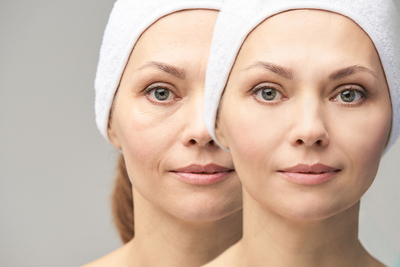Dermal Fillers: Everything you should know about facial wrinkle fillers

Everybody wants younger-looking skin. That is why more people are shifting their attention to wrinkle treatments that last longer. Medical and pharmaceutical companies are aware of this and have come up with countless number of solutions that reduce the signs of aging skin. Some of the products that have had revolutionary impact in the field of cosmetic dermatology are dermal fillers. Find out how they work and the best places to get injected.
What are Dermal Fillers?
A dermal filler is an injection procedure that helps restore the fullness of the face. As the name suggests, they are used in soft tissues (dermis) to fill creases, wrinkles and areas that have lost volume. Since the face starts to age around the areas under the eyes, nasolabial folds, cheek and jowl, these are the areas targeted during dermal filling. Cosmetic fillers are also used in improving the appearance of recessed scars, reconstruction of face contour deformities and plumping thin lips. According to the U.S. Food and Drug Administration (FDA), fillers can only be used for the above-mentioned purposes.
Hyaluronic Acid Fillers
Natural fillers consist of substances that naturally occur in humans and other bio-similar animals to improve the skin’s contour. They are the most popular category of fillers and they go by popular brand names like Restylane , Belotero, and Juvederm. The active ingredient in these products is hyaluronic acid, a natural substance. Hyaluronic acid is reformulated and when injected, it binds with nearby water molecules to reduce depressions and volumize skin. Most injectables are mixed with lidocaine, a numbing agent which reduces any mild discomfort. Hyaluronic acid fillers last anywhere from 6 months to 18 months depending on which is used.
Other Types of Dermal Fillers
Additional materials found in fillers range from poly-L-lactic acid, Polymethyl methacrylate Microspheres based in collagen (PPMA) to calcium hydroxyapatite. Poly-L-lactic and PMMA, popularly known as Sculptra and Bellafill, make use of microspheres as synthetic fillers. The microspheres work to promote fibroblastic activity, a process by which cells increase production of collagen to thicken the treated areas. These fillers are longer lasting, as they provide a structure for one’s own collagen to grow. The average length of time is between 2-5 years. Additionally, the creation of new collagen brightens the skin, giving it a youthful glow, commonly known as the “Sculptra Glow”.
Calcium hydroxyapatite is the main ingredient of Radiesse. Radiesse dermal fillers produce a similar action to Sculptra, in that they stimulate production of collagen. Moreover, the former can be modified or molded to improve facial contours, decrease laugh lines. After successfully treating the skin with calcium hydroxyapatite, you can expect the natural results to last to last for up to two years.
Are Facial Fillers Safe?
Now that you’re aware of the various options of cosmetic fillers, it’s important to understand that dermal filler injections are a medical procedure and should only be administered by a dermatology provider specifically trained in facial fillers. Our licensed providers at Schweiger Dermatology Group, welcome consultations and any questions you may have regarding cosmetic fillers, to restore your rejuvenated and revitalized skin. So, take advantage of our experience and understanding of dermal fillers to effectively and wonderfully change the way you look!
